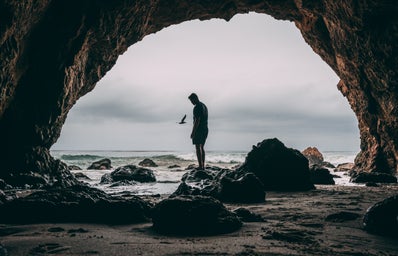The Taínos, long before the arrival of the Spaniard colonists and its subsequent genocide, already had their myths, their mythology, and their religion. They were the bohique (religious leader) and the cacique (political-religious leader), the ones in charge of leading the ceremonies and passing on the tradition. Let’s get to know our ancestors’ beliefs.
Yaya –who may become the later known Yocahu Bagua Maórocoti– was the elemental principle of existence. In simple terms, he was a life-giving spirit. He created his son Yayael, who wanted to kill him. Yaya allows Yayael to approach him, but he kills him and places his bones in a gourd. The gourd would transform into fish.
The origin of The Great Mother, Itiba Cahubaba, is unknown, but we may assume that she might’ve emerged from Yaya. Itiba Cahubaba could be compared to Gaia from Greek Mythology: symbolizing earth and life-giving. Legends say that Itiba Cahubaba would give birth to quadruplets and die during childbirth.
The story of Yayael isn’t over. While he’s a fish, he is placed inside a pumpkin. One of the offspring, Deminán Caracaracol, would lead the others to break the pumpkin open to eat Yayael. The pumpkin containing Yayael falls from their hands and crashes, spilling water over the planet, and causing the seas to be born.
At another point, Deminán Caracaracol and his brothers find Bayamanaco, the lord of fire. They steal his fire from the cohoba ritual and the casabe. Bayamanaco shoots Deminán in the back. The wound grows. His brothers open it and a turtle comes out. The brothers introduced casabe and fire to the earth. For those of you who are not familiar with Taino plants, cohoba is a hallucinogenic plant that’s used in religious and political rituals.
The Taínos conceived of the island of Hispaniola as a large woman’s body. It was, then, a sacred space that generated life. On the east side was the divine snake cave: Iguanaboína. Boínayel and Márohu accompanied her, and the three were considered the deities of good weather and fertilizing rain. His counterparts were three other divinities, those of bad weather and hurricanes: Guabancex, Guatauba, and Coatrisquie. The center of the universe was Cauta Mountain. There were two caves in it. From the Cacibajagua cave, the first humans would emerge and society would begin. The third cave, to the west, was called Coaybay. They ruled Maquetarie Guayaba, lord of the dead.
There were three attempts to get out of the cave. In the first, the sun turned Mácocael, guardian of Cacibajagua, into stone. In the second, at sunrise, some fishermen were turned into trees. In the third, Yahubaba, who was looking for a magical-medicinal plant, was transformed into a bird. Guahayona and Anacacuya managed to get out of the cave. At sea, Guahayona threw Anacacuya out of the canoe, returned to the cave, and took the women, leaving them on an island. Guahayona made a trip to a place called Guanín. The children, who had been left without their mothers, turned into frogs from crying so much. The men saw how androgynous beings made of wood appeared from the trees. The woodpecker, Inriri, carves the woman’s sex into their bodies.
In the Taíno religion, there was the concept of the cemí, which alluded to both the deities and the figures of wood or stone with which they were represented. The batey, or ceremonial plaza, framed its space with stones on which there could be drawings of cemíes. This was the place where the areito was held, a celebration in which people sang and danced. During this ceremony, the mythical history of the town was narrated to all the members of the yucayeque. Also, in the same space, the ball game took place.
A religious ceremony of great importance was the ritual of the cohoba. The main men of the yucayeque, the nitaínos, reunited with the cacique and the bohique in the caney, a space that served as the temple and house of the cacique. There, only the cacique or the bohique inhaled the powder of the cohoba seed, mixed with ground snails to -ecstatic and in a trance- establish communication with the cemíes. With this act, answers were sought about the present, the future, or the cause of illnesses and how to cure them.
As we can see, the Taíno people had a mythology that is both dynamic and adventurous. They had creation myths, family troubles, and mortal-god interactions as other well-known mythologies, but with the flavor of their culture. They were the original Puerto Ricans, and this is our island’s mythology.
Retrieved from Pinterest

